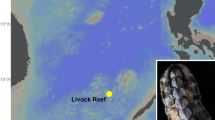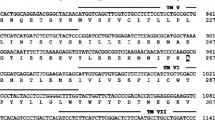Abstract
Phylogenetic relationships of 25 mammalian species representing 17 of the 18 eutherian orders were examined using DNA sequences from a 1.2-kb region of the 5′ end of exon 1 of the single-copy nuclear gene known as interphotoreceptor retinoid binding protein (IRBP). A wide variety of methods of analysis of the DNA sequence, and of the translated products, all supported a five-order clade consisting of elephant shrew (Macroscelidea)/aardvark (Tubulidentata)/and the paenungulates (hyracoids, sirenians, and elephants), with bootstrap support in all cases of 100%. The Paenungulata was also strongly supported by these IRBP data. In the majority of analyses this monophyletic five-order grouping was the first branch off the tree after the Edentata. These results are highly congruent with two other recent sources of molecular data. Another superordinal grouping, with similar 100% bootstrap support in all of the same wide-ranging types of analyses, was Artiodactyla/Cetacea. Other superordinal affinities, suggested by the analyses, but with less convincing support, included a Perissodactyla/Artiodactyla/Cetacea clade, an Insectivora/Chiroptera clade, and Glires (an association of rodents and lagomorphs).
Similar content being viewed by others
References
Adachi J, Cao Y, Hasegawa M (1993) Tempo and mode of mitochondrial DNA evolution in vertebrates at the amino acid sequence level: rapid evolution in warm blooded vertebrates. J Mal Evol 36:270–281
Adkins RM, Honeycutt RL (1991) Molecular phylogeny of the superorder Archonta. Proc Natl Acad Sci USA 88:10317–10321
Adkins RM, Honeycutt RL (1993) A molecular examination of Archontan and Chiropteran monophyly. In: MacPhee RDE (ed) Primates and their relatives in phylogenetic perspective. Plenum, New York, pp 227–249
Allard MW, McNiff BE, Miyamoto MM (1996) Support for interordinal eutherian relationships with an emphasis on Primates and their archontan relatives. Mol Phyl Evol 5:78–88
Ammerman LK, Hillis DM (1992) A molecular test of bat relationships: monophyly or diphyly? Syst Biol 41:222–232
Bailey WJ, Slightom JL, Goodman M (1992) Rejection of the “flying primate” hypothesis by phylogenetic evidence from the ε-globin gene. Science 256:86–89
Borst DE, Redmond TM, Elser JE, Gonda MA, Wiggert B, Chader GJ, Nickerson JM (1989) Interphotoreceptor retinoid binding protein: gene characterization, protein repeat structure, and its evolution. J Biol Chem 264:1115–1123
Cabot EL, Beckenbach AT (1989) Simultaneous editing of multiple nucleic acid and protein sequences with ESEE. Comput Appl Biosci 5:233–234
Cao Y, Adachi J, Janke A, Pääbo S, Hasegawa M (1994) Phylogenetic relationships among eutherian orders estimated from inferred sequences of mitochondrial proteins: instability of a tree based on a single gene. J Mol Evol 39:519–527
Corbet GB, Hanks J (1968) A revision of the elephant shrews, family Macroscelididae. Bull Br Mus Nat Hist Zool 16:47–111
Czelusniak J, Goodman M, Koop BF, Tagle DA, Shoshani J, Braunitzer G, Kleinschmidt TK, de Jong WW, Matsuda G (1990) Perspectives from amino acid and nucleotide sequences on cladistic relationships among higher taxa of Eutheria. In: Genoways HH (ed) Current mammalogy, vol 2. Plenum, New York, pp 545–572
de Jong WW, Leunissen JAM, Wistow GJ (1993) Eye lens crystalline and the phylogeny of placental orders: evidence for a Macroscelid-Paenungulate Glade? In: Szalay FS, Novacek MJ, McKenna MC (eds) Mammal phylogeny: placentals. Springer Verlag, New York, pp 5–12
de Jong WW, Zweers A, Goodman M (1981) Relationship of aardvark to elephants, hyraxes and sea cows from alpha-crystallin sequences. Nature 292:538–540
Felsenstein J (1981) Evolutionary trees with DNA sequences: a maximum likelihood approach. J Mol Evol 17:368–376
Felsenstein J (1985a) Confidence limits on phylogenies: an approach using the bootstrap. Evolution 39:783–791
Felsenstein J (1985b) Confidence limits on phylogenies with a molecular clock. Syst Zool 34:152–161
Felsenstein J (1993) PHYLIP (phylogeny inference package) version 3.5c. Distributed by the author. Department of Genetics, University of Washington, Seattle
Fong S-L, Fong W-B, Moms TA, Kedzie KM, Bridges CDB (1990) Characterization and comparative structural features of the gene for human interstitial retinol-binding protein. J Biol Chem 265:3648–3653
Gingerich PD, Smith BH, Simons EL (1990) Hind limbs of EoceneBasilosaurus: evidence of feet in whales. Science 249:154–157
Goodman M, Czelusniak J, Beeber JE (1985) Phylogeny of primates and other eutherian orders: a cladistic analysis using amino acid and nucleotide sequence data. Cladistics 1:171–185
Graur D, Higgins DG (1994) Molecular evidence for the inclusion of cetaceans within the order Artiodactyla. Mol Biol Evol 11:357–364
Gregory WK (1910) The orders of mammals. Bull Am Mus Nat Hist 27:1–524
Hartenberger JL (1986) Hypothèse paléontologique sur l'orìgine des Macroscelidea (Manmialia). C R Acad Sci Ser II 302:247–249
Honeycutt RL, Adkins RM (1993) Higher level systematics of eutherian mammals: An assessment of molecular characters and phylogenetic hypotheses. Annu Rev Ecol Syst 24:279–305
Honeycutt RL, Nedbal MA, Adkins RM, Janacek LL (1995) Mammalian mitochondrial DNA evolution: a comparison of the cytochromeb and cytochromec oxidase II genes. J Mol Evol 40:260–272
Johnson JI, Kirsch JAW (1993) Phylogeny through brain traits: interordinal relationships among mammals including Primates and Chiroptera. In: MacPhee RDE (ed) Primates and their relatives in phylogenetic perspective. Plenum, New York, pp 293–331
Jukes TH, Cantor CR (1969) Evolution of protein molecules. In: Munro HN (ed) Mammalian protein metabolism, vol 2. Academic Press, New York, pp 21–123
Kimura M (1980) A simple model for estimating evolutionary rates of base substitutions through comparative studies of nucleotide sequences. J Mol Evol 16:111–120
Li W-H, Gouy M, Sharp PM, O'Huigin C, Yang Y-W (1990) Molecular phylogeny of Rodentia, Lagomorpha, Primates, Artiodactyla and Carnivora and molecular clocks. Proc Natl Acad Sci USA 87:6703–6707
McKenna MC (1975) Toward a phylogenetic classification of the Mammalia. In: Luckett WP, Szalay FS (eds) Phylogeny of the primates, a multidisciplinary approach. Plenum, New York, pp 21–46
McKenna MC (1987) Molecular and morphological analysis of highlevel mammalian interrelationships. In: Patterson C (ed) Molecules and morphology in evolution: conflict or compromise? Cambridge University Press, Cambridge, pp 55–93
Milinkovitch MC, Orti G, Meyer A (1993) Revised phylogeny of whales suggested by mitochondrial ribosomal DNA sequences. Nature 361:346–348
Miyamoto MM, Goodman M (1986) Biomolecular systematics of eutherian mammals: phylogenetic patterns and classification. Syst Zool 35:230–240
Nei M (1991) Relative efficiencies of different tree-making methods for molecular data. In: Miyamoto MM, Cracraft J (eds) Phylogenetic analysis of DNA sequences. Oxford University Press, Oxford, pp 90–128
Novacek MJ (1982) Information for molecular studies from anatomical and fossil evidence on eutherian phylogeny. In: Goodman M (ed) Macromolecular sequences in systematic and evolutionary biology. Plenum, New York, pp 3–41
Novacek MJ (1986) The skull of leptictid insectivorans and the higherlevel classification of eutherian mammals. Bull Am Mus Nat Hist 183:1–111
Novacek MJ (1990) Morphology, paleontology, and the higher Glades of mammals. In: Genoways HH (ed) Current mammalogy, vol 2. Plenum, New York, pp 507–543
Novacek MJ (1992) Mammalian phylogeny: shaking the tree. Nature 356:121–125
Novacek MJ, Wyss AR (1986) Higher level relationships of the recent eutherian orders: morphological evidence. Cladistics 2:257–287
Pepperberg DR, Okajima T-IL, Wiggert B, Ripps H, Crouch RK, Chader GJ (1993) Interphotoreceptor retinoid binding protein (IRBP): molecular biology and physiological role in the visual cycle of rhodopsin. Mol Neurobiol 7:61–84
Porter CA, Goodman M, Stanhope MJ (1996) Evidence on mammalian phylogeny from sequences of exon 28 of the von Willebrand factor gene. Mol Phylo Evol 5:89–101
Prothero DR, Manning EM, Fischer M (1988) The phylogeny of ungulates. In: Benton MJ (ed) The phylogeny and classification of the tetrapods, vol 2. Clarendon, Oxford, pp 201–234
Prothero DR, Schoch R (1989) Origin and evolution of the Perissodactyla: summary and synthesis. In: Prothero DR, Schoch R (eds) The evolution of the Perissodactyls. Oxford University Press, New York, pp 504–529
Saitou N, Nei M (1987) The neighbor-joining method: a new method for reconstructing phylogenetic trees. Mol Biol Evol 4:406–425
Shoshani J (1993) Hyracoidea-Tethytheria affinity based on myological data. In: Szalay FS, Novacek MJ, McKenna MC (eds) Mammal phylogeny: placentals. Springer Verlag, New York, pp 235–256
Simons EL, Holroyd PA, Bown TM (1991) Early tertiary elephant shrews from Egypt and the origin of the Macroscelidea. Proc Natl Acad Sci USA 88:9734–9737
Simpson GG (1945) The principles of classification and a classification of mammals. Bull Am Mus Nat Hist 851–350
Springer MS, Kirsch JAW (1993) A molecular perspective on the phylogeny of placental mammals based on mitochondrial 12S rDNA sequences, with special reference to the problem of the Paenungulata. J Mammal Evol 1:149–166
Stanhope MJ, Czelusniak J, Si J-S, Nickerson J, Goodman M (1992) A molecular perspective on mammalian evolution from the gene encoding interphotoreceptor retinoid binding protein, with convincing evidence for bat monophyly. Mol Phyl Evol 1:148–160
Stanhope MJ, Bailey WJ, Czelusniak J, Goodman M, Si J-S, Nickerson J, Sgouros JG, Singer GAM, Kleinschmidt K (1993) A molecular view of primate supraordinal relationships from the analysis of both nucleotide and amino acid sequences. In: MacPhee RDE (ed) Primates and their relatives in phylogenetic perspective. Plenum, New York, pp 251–292
Szalay FS (1977) Phylogenetic relationships and classification of the eutherian Mammalia. In: Hecht MK, Goody PC, Hecht BM (eds) Major patterns in vertebrate evolution. Plenum, New York, pp 315–374
Szalay FS (1985) Rodent and lagomorph morphotype adaptations, origins, and relationships: some postcranial attributes analyzed. In: Luckett WP, Hartenberger JL (eds) Evolutionary relationships among rodents: a multidisciplinary analysis. Plenum, New York, pp 83–132
Templeton AR (1983) Phylogenetic inference from restriction endonuclease cleavage site maps with particular reference to the evolution of humans and the apes. Evolution 37:221–244
Author information
Authors and Affiliations
Additional information
Correspondence to: M. J. Stanhope
Rights and permissions
About this article
Cite this article
Stanhope, M.J., Smith, M.R., Waddell, V.G. et al. Mammalian evolution and the interphotoreceptor retinoid binding protein (IRBP) gene: Convincing evidence for several superordinal clades. J Mol Evol 43, 83–92 (1996). https://doi.org/10.1007/BF02337352
Received:
Accepted:
Issue Date:
DOI: https://doi.org/10.1007/BF02337352




